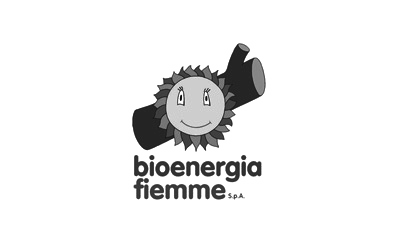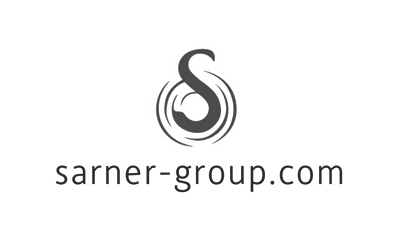District Heating Systems
A resource for the community
District heating is a modern technology for a more efficient use of primary energy. It is based on the possibility of using even renewable energy sources like biomasses and geothermal energy, but it can also be powered by gas plants or retrieving energy from the waste generated by industrial processes. Implementation of this system in the territory makes it easier to more accurately control exhaust gases coming from a centralized plant, solving the problem of poor inspections often carried out on private boilers. In new buildings, moreover, it guarantees an important reduction in the investment costs required to build and manage systems.
The sector of efficient use of renewable energy sources is continuously growing and evolving, driven by the awareness that the time we have left to solve environmental issues is decreasing rapidly.
This is why there is a growing need for structured companies, capable of designing specialised systems in this field, and in this particular strategic field. Anticipating market evolutions and customer demands, we have invested in the creation of an internal organisation and staff that is specifically trained and highly specialised.
District Heating, What and Why
What is District Heating?
A systems philosophy that combines centralised energy production with branched distribution of heat through underground pipelines.
Lower emissions
In most cases, district heating systems replace obsolete and little-monitored existing systems. The concentration of atmospheric emissions in a single point – the production plant – instead than spread out around the territory with individual boilers and/or stoves, makes it easier to control and dilute exhaust fumes into the atmosphere. The initial design phase, combined with electronic modelling, defines the system optimisation and compatibility parameters for the territory, based on its morphology, its winds, and the concentration of inhabited areas.
Reduced management costs for the final customer
One of the advantages most appreciated by the final user is a reduction in the cost of running and maintaining the systems. In a district heating solution, these expenses become controlled and certain, and are indicated in the bill, including all maintenance expenses incurred by the service provider.
Increased safety at home
The absence of a traditional thermal system with a boiler inside the home is a further guarantee of safety, since the utility substation does not require fuel sources.
A dedicated, trained, specialised team
Specialised personnel
Over time, we have trained and grown an internal organisation and highly specialised, specifically trained staff.
We have UNI EN ISO 9606-1:2013 certified welders, capable of performing x-rayable welds, and certified sleeve installers for joint insulation work, qualified by all leading suppliers of pre-insulated and specialised systems according to German directive FW603, which defines the quality standards for insulation processes.
This allows us to carry out work internally and to guarantee a high quality level, only occasionally using outside personnel.
Equipment
Worksite personnel is equipped with independent vehicles, fitted with motor welding sets and/or power generators of various sizes, and use the latest technical equipment for processing, for joining pipes with special pieces, and for joint insulation.
Company certifications
We are ISO 9001, ISO 14001, ISO 18001 certified, in line with the market demands for quality standards and to provide our Customers with all the necessary support.
In the installation of underground networks, welding is one of the most important processes. In order to guarantee the utmost quality in this type of processes, we have obtained the ISO 3834/2 certification.
What we do
Digging, re-burying, and fixing surfaces
We work with the care and attention that this type of system requires and, with the help of our partners, we carry out all the construction work required to install the pipes.
We make use of the experience we have acquired over the years to identify the best solution for each situation. We carry out work in residential areas and industrial complexes, respecting the existing sub-services and road network, well aware that these processes have a significant impact on the population. We ensure respect and optimisation of execution times in order to reduce any problems derived from the worksite’s impact on the surrounding environment.
Installing pipelines
We have teams of specialised pipe installers and welders, with experience in pipeline installation, in order to align pipes and carry out the subsequent welding processes.
Within the pipe installer team, we always identify a worksite foreman, who is responsible for coordinating the digging works in order to plan and organise all the subsequent welding and sleeve installation phases, guaranteeing that work is carried out according to schedule.
Tests and inspections
We are supported by external companies, spread out around the country, to guarantee limited re-burying times and to perform tests and inspections on welds. This promptness is essential in order to stick to the scheduled times.
Monitoring and “As Built”
All networks we install are geo-referenced and monitored with GPS instruments and then saved in digital and hard copies. This allows us to archive all data on the location of works, guaranteeing a quick and effective traceability in case of malfunctions or changes to the system. The exact position of a pipe is fundamental for maintenance work and/or extensions.
Design
Supported by our suppliers, we design all the networks that we install, providing for expansions and contractions along the lines, in order to guarantee durability over time.
The factors that make a difference
Foreword
In district heating systems, heat production is centralised and entrusted to large generators capable of replacing the boilers installed in existing systems distributed throughout the territory involved in the operation. In building thermal energy production plants, we dedicate a lot of attention to the components that are essential for the work to be successful, and that guarantee limited maintenance of the plant.
Quality of components
To make sure that the installed system is made to last, it is essential to purchase high-quality materials.
Quality in installation
The experience gained by our technical staff in managing work orders and installation teams favours high quality standards in the installation phase.
Construction drawing
Detailed drawings of the installed systems, using modern three-dimensional programs, allows prefabrication in the workshop, thus reducing on-site work times.
Maintainability
Care for the maintenance aspects and costs in the installation material purchasing phase guarantees easy management and savings for the customer.
Testability
The attention we dedicate to tests in the phase of handing over the completed work guarantees customer satisfaction and tests the quality of the installed system.
Some District Heating Systems references






